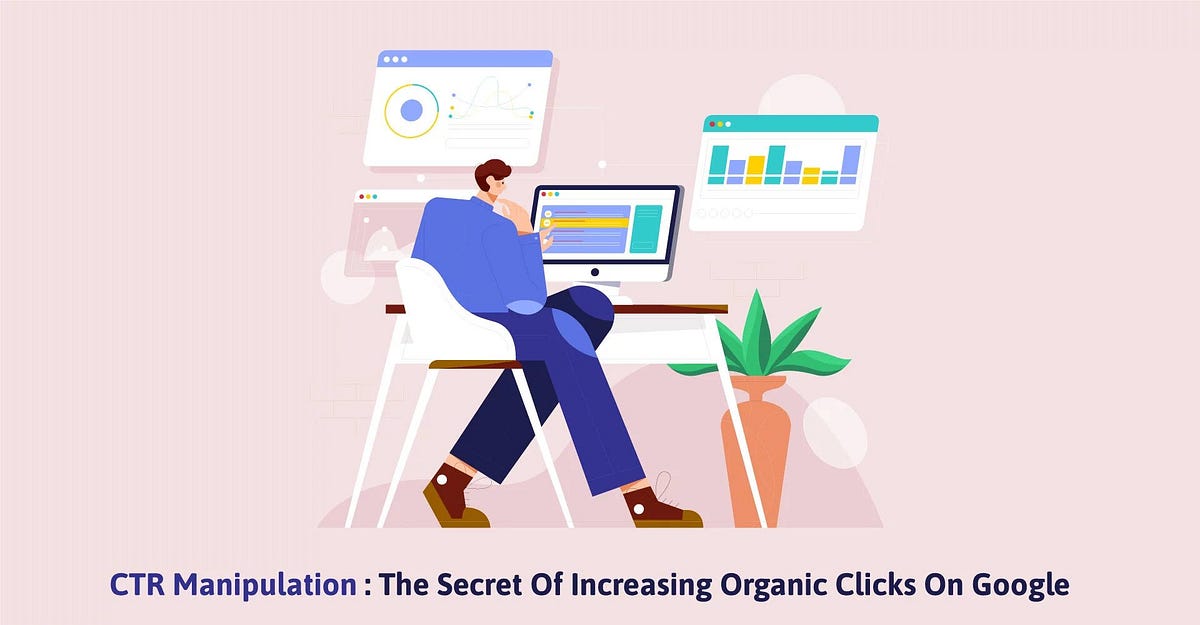Comprehensive CTR Manipulation Service: Maximize Your Advertising And Marketing Effect
Comprehensive CTR Manipulation Service: Maximize Your Advertising And Marketing Effect
Blog Article
Discovering the Partnership Between CTR Manipulation Solutions and Individual Behavior
In the realm of electronic advertising, the impact of click-through rate (CTR) adjustment services on user behavior continues to be a facility and interesting subject. By studying the elaborate relationship between CTR manipulation services and individual behavior, fascinating insights arise that may reshape our understanding of electronic advertising methods and their effects on consumers.
Influence of CTR Adjustment on Behavior
Analyzing the influence of Click-Through Rate (CTR) manipulation on user behavior discloses important understandings into the dynamics of online involvement. CTR manipulation involves artificially blowing up the variety of click a specific link or promotion to deceive customers and search engines. This technique can bring about an altered understanding of a page's appeal or significance, inevitably impacting user actions.

Moreover, CTR control can skew the information made use of by algorithms to customize customer experiences. This can lead to users being offered material that does not line up with their preferences or interests, eventually bring about a decrease in customer contentment and engagement. Understanding the impact of CTR control on individual actions is necessary for maintaining transparency and trust in online communications.
Customer Involvement With Adjusted CTR
Customer involvement with controlled CTR data usually leads to skewed understandings of online web content appeal and relevance. When customers interact with material based on unnaturally inflated Click-Through Rates (CTR), they might think that particular information, products, or solutions are more prominent or reliable than they actually are. This can result in customers making decisions based on deceptive information, leading to possibly unfavorable outcomes.
Engagement metrics like sort, shares, comments, and time spent on a web page are commonly influenced by CTR manipulation. Individuals may be more inclined to engage with content that appears to have greater involvement rates, additionally continuing the cycle of skewed understandings. Consequently, content developers and advertisers may prioritize creating content that produces high CTR rather than concentrating on developing genuinely important and relevant product.

Emotional Results of CTR Control

Furthermore, the mental effects of CTR manipulation can additionally materialize in modified decision-making procedures. Customers might be a lot more inclined to click on material only based upon its viewed appeal, instead of its real value or significance to their requirements. This behavior shift can cause a superficial interaction with on the internet material, where users may forget top quality but less preferred offerings in support of those with unnaturally increased CTRs.
In significance, the mental ramifications of CTR control highlight the value of maintaining transparency and authenticity in online communications to cultivate authentic user interaction and depend on.
Moral Considerations in CTR Adjustment
CTR adjustment get more raises problems concerning deceiving customers, distorting information analytics, and endangering the integrity of get redirected here on the internet content. By artificially inflating CTR, users may be misinformed into clicking on web links or ads they would not have picked or else, leading to an insincere online experience.
One more moral facet to consider is the justness of adjusting CTR to acquire an unfair advantage over rivals. Participating in such practices not just breaches principles of fair game however also weakens the trust that customers put in on-line platforms. It is essential for organizations and digital marketing experts to support moral requirements in their techniques to make certain openness, credibility, and long-term sustainability in the online environment.
Implications for Digital Marketing
CTR manipulation can lead to skewed information analytics, deceiving marketing experts into believing that their campaigns are carrying out far better than they actually are. When customers realize that CTRs have actually been adjusted, it can deteriorate trust fund in the brand, leading to long-term negative effects for customer commitment and brand name track record.
Additionally, the usage of CTR adjustment services can create an unfair competitive landscape, where business that participate in such techniques gain an artificial benefit over those that comply with ethical advertising requirements. This can stifle technology and creative thinking in digital advertising and marketing, as success ends up being even more concerning adjustment methods than supplying genuine value to consumers. Ultimately, the implications of CTR manipulation for electronic advertising and marketing expand beyond short-term gains, impacting the total sustainability and integrity of marketing initiatives in the electronic world.
Verdict
In verdict, the partnership in between CTR control solutions and customer actions more info here is intricate and diverse. The effect of CTR adjustment on habits, customer engagement with manipulated CTR, mental impacts, honest considerations, and implications for electronic advertising all play a role in forming this connection. Comprehending these dynamics is crucial for online marketers and scientists alike in order to navigate the ethical effects and make best use of the performance of their digital advertising and marketing techniques.
Report this page